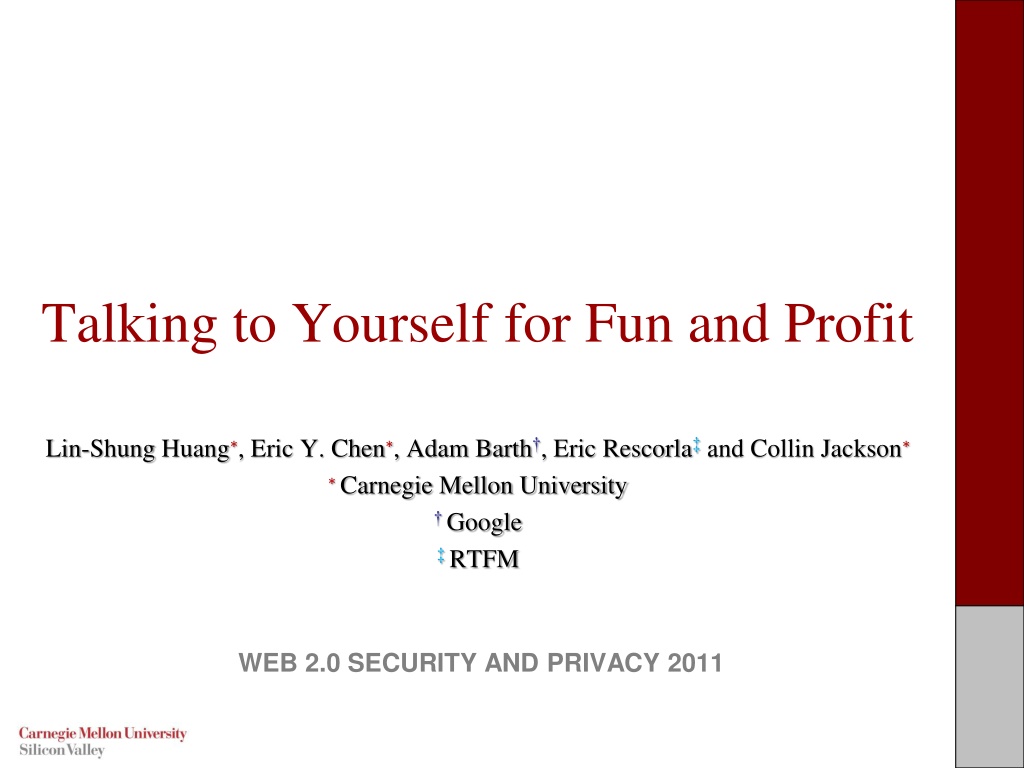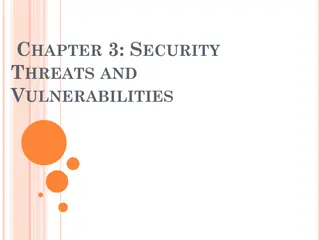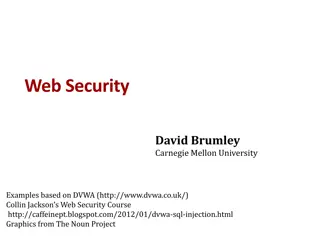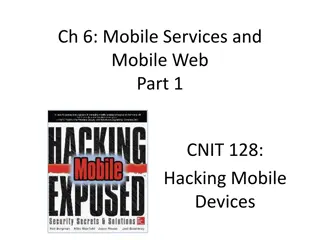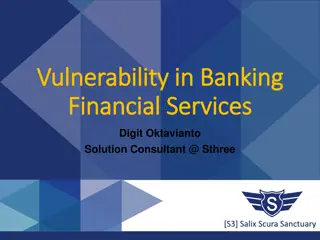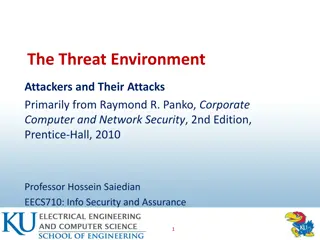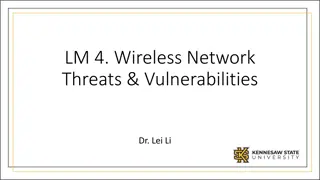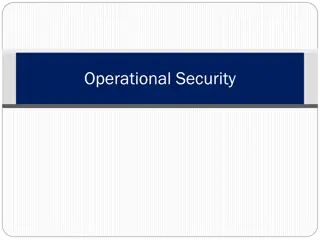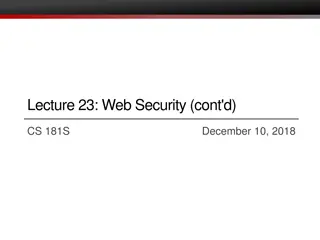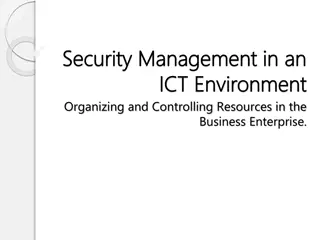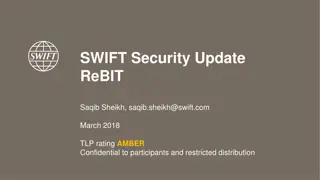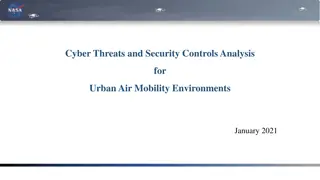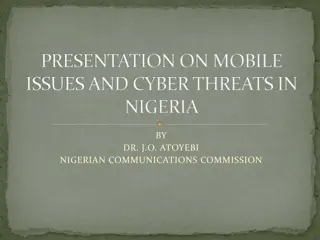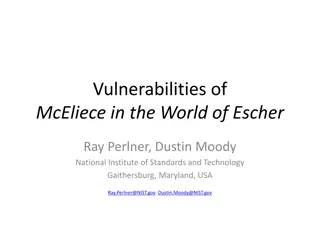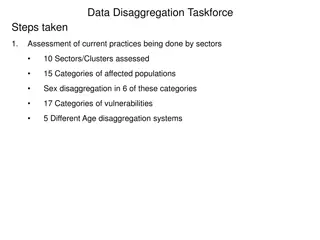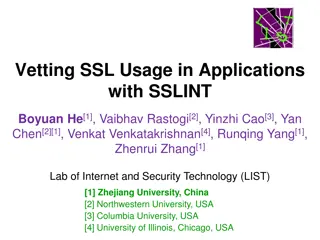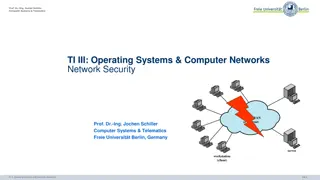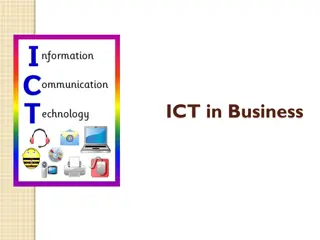Web Security Threats and Vulnerabilities: An Overview
Understanding the risks associated with web security, including issues like IP hijacking, cache poisoning, and transparent proxies. Explore how existing approaches fall short in protecting against malicious attacks and potential exploits, with observed vulnerabilities highlighting the importance of proactive security measures.
Download Presentation

Please find below an Image/Link to download the presentation.
The content on the website is provided AS IS for your information and personal use only. It may not be sold, licensed, or shared on other websites without obtaining consent from the author. Download presentation by click this link. If you encounter any issues during the download, it is possible that the publisher has removed the file from their server.
E N D
Presentation Transcript
Talking to Yourself for Fun and Profit Lin-Shung Huang , Eric Y. Chen , Adam Barth , Eric Rescorla and Collin Jackson Carnegie Mellon University Google RTFM WEB 2.0 SECURITY AND PRIVACY 2011
Bringing Sockets to the Web Web applications need to talk to the cloud But HTTP is inefficient E.g. chat, multiplayer games Plug-ins and HTML5 provide socket APIs Plug-ins: Native: Modest amounts of security analysis
Existing Approaches Flash Player: Authorizes by policy files <policy-file-request /> B.com <allow-access-from domain="*" /> 01100111011101 Java: Only talks to yourself B.com A.com 01100111011101 What could possibly go wrong?
Beware of Transparent Proxies Inspect and modify HTTP traffic Content filtering Web acceleration A.com GET / HTTP/1.0 Host: a.com GET / HTTP/1.0 Host: a.com HTTP 200 OK Cache-Control: public <html> HTTP 200 OK Cache-Control: public <html> Cache hit! GET / HTTP/1.0 Host: a.com HTTP 200 OK Cache-Control: public <html>
IP Hijacking [Auger '10] Allows connection to unauthorized destinations if routing by Host header Alice attacker.com IP: 2.2.2.2 To 2.2.2.2 port 843: <policy-file-request /> Flash Player Route by IP To 2.2.2.2 port 843: <policy-file-request /> attacker.swf To 2.2.2.2 port 80: GET / HTTP/1.1 Host: target.com <allow-access-from domain="*" /> Route by Host target.com IP: 1.1.1.1
Cache Poisoning Even worse if routing by IP, and caching by Host header Alice attacker.com IP: 2.2.2.2 Proxy To 2.2.2.2 port 80: GET /script.js HTTP/1.1 Host: target.com Java VM Route by IP attacker.class Cache by Host script.js To 1.1.1.1 port 80: GET /script.js HTTP/1.1 Host: target.com target.com IP: 1.1.1.1 Cache hit! Bob Cache script.js
How bad is it? Advertising network experiments $100 = 174,250 impressions Observe browsers in the wild Mount proof-of-concept attacks against our servers
Observed Vulnerabilities IP hijacking Java: 3,152 of 51,273 (6.1%) Flash Player: 2,109 of 30,045 (7%) Cache poisoning Java: 53 of 30,045 (0.18%) Flash Player: 108 of 51,273 (0.21%) Less than $1 per exploitation!
Designing HTML5 WebSockets Strawman consent protocols 1. POST-based handshake 2. Upgrade-based handshake 3. CONNECT-based handshake Proposed modifications Mask attacker-controlled bytes
Strawman #1 POST-based handshake For HTML form elements Client Server: POST /path/of/attackers/choice HTTP/1.1 Host: host-of-attackers-choice.com Sec-WebSocket-Key: <connection-key> Server Client: HTTP/1.1 200 OK Sec-WebSocket-Accept: <connection-key> IP hijacking: 1,376 of 49,218 Cache poisoning: 15 of 49,218
Strawman #2 Upgrade-based handshake For layering TLS over HTTP Client Server: GET /path/of/attackers/choice HTTP/1.1 Host: host-of-attackers-choice.com Connection: Upgrade Sec-WebSocket-Key: <connection-key> Upgrade: WebSocket Server Client: HTTP/1.1 101 Switching Protocols Connection: Upgrade Upgrade: WebSocket Sec-WebSocket-Accept: HMAC(<connection-key>, "...") IP hijacking: 174 of 47,388 Cache poisoning: 8 of 47,388
Strawman #3 CONNECT-based handshake For tunneling TLS through proxies Client Server: CONNECT websocket.invalid:443 HTTP/1.1 Host: websocket.invalid:443 Sec-WebSocket-Key: <connection-key> Sec-WebSocket-Metadata: <metadata> Server Client: HTTP/1.1 200 OK Sec-WebSocket-Accept: <hmac> 2 spoofed HTTP requests routed by IP
Frame Masking Mask attacker-controlled bytes Raw bytes on the wire should not be chosen by attacker Stream cipher e.g. AES-CTR-128 Per-frame random nonce XOR cipher as alternative
Performance (a) 10 byte data frames (b) 100 byte data frames (c) 1000 byte data frames
Reaction Firefox and Opera temporarily disabled HTML5 WebSockets The WebSocket Protocol working group adopted a variant of our proposal, requiring XOR-based frame masking Firefox dev build Microsoft WebSockets prototype
Conclusion Roughly 7% browsers are behind proxies with implementation errors Protocols designers should consider how attackers can manipulate data to fool network intermediaries HTML5 WebSocket protocol is work in progress, we also recommend Java and Flash Player to address this issue
